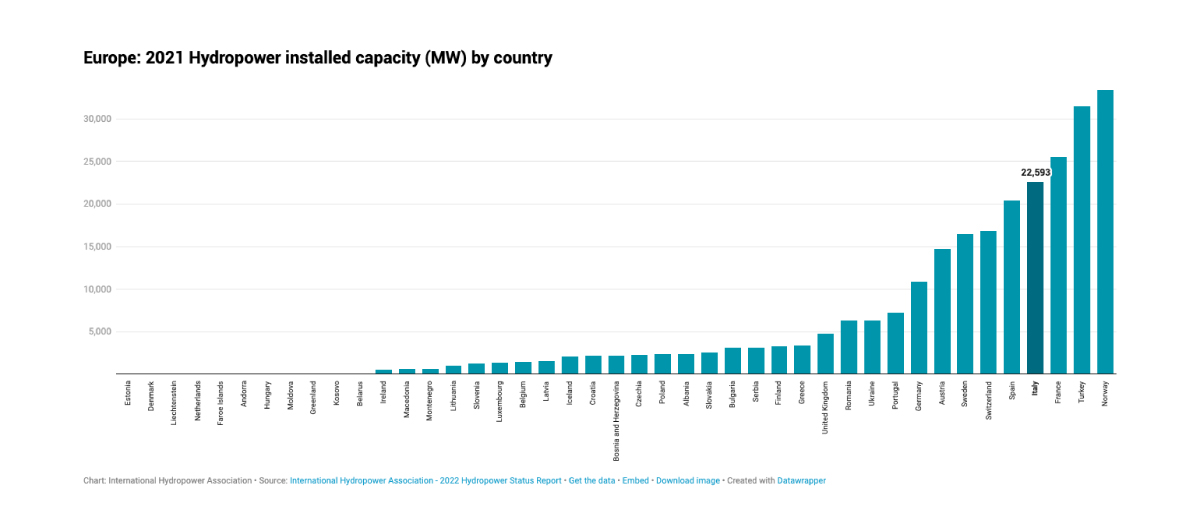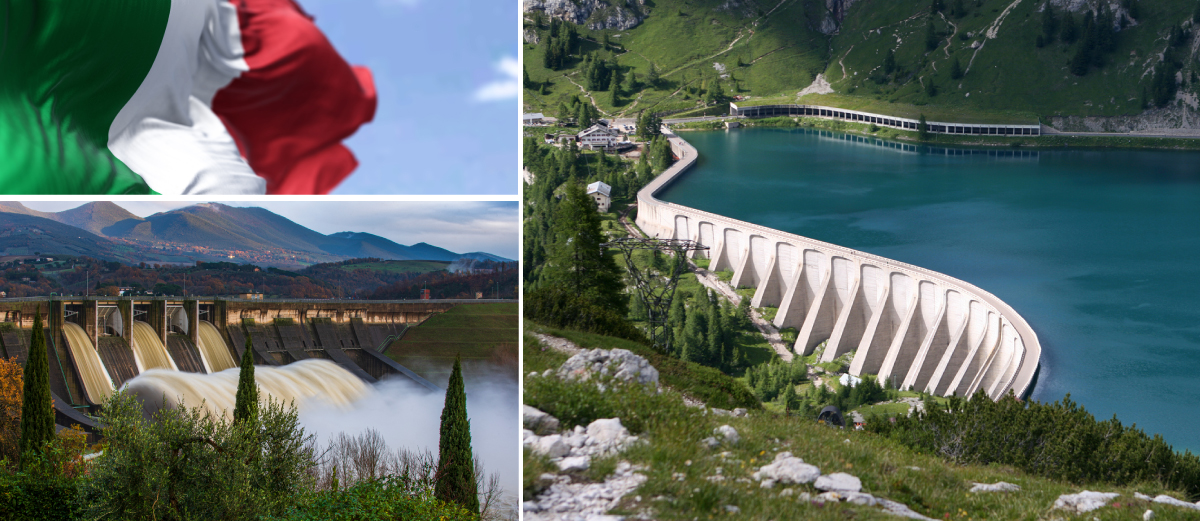Hydropower is arguably the main source of renewable energy worldwide. It’s much more effective than solar panels or wind turbines and also much safer than nuclear energy. Still, hydropower corresponds to only 16% of worldwide electricity output.
However, those figures are likely to improve, as global investments in the sector crossed the $36 billion last year. Below, we’ll discuss the pros and cons of hydroelectric power and hydroelectric power in Italy.
Advantages and Disadvantages of Hydroelectric Power Plants in the European Context
Hydropower is a dominant source of energy in the European Union. It’s the second most important renewable energy source (with wind coming in first), and it accounts for about a third of the EU’s renewable energy output. The EU has also worked on a set of legislations to balance the advantages and disadvantages of hydroelectric power plants.

The Water Framework Directive, for instance, oversees the environmental impacts of installing a power plant. Changes in the river morphology, wildlife, and other potential damage to the river system are possible disadvantages of hydroelectric power plants.
The output of hydroelectric power plants can also be affected by the weather. Last year, temperatures above 40°C and prolonged periods without rain put pressure on the continent’s hydropower system. In some regions, the low water levels of reservoirs diminished their output severely, and others still were simply shut down.
Italy is among the countries that were most impacted by inclement weather. According to Francisco Fornari, Enel’s lead civil engineer, such a situation has never been recorded in industrial history. Due to the water shortage in the main reservoirs, Enel’s output last summer was more than 50% lower compared with the same period in 2021.
The war in Ukraine is also pushing for a quicker expansion of hydropower capacity in the continent. In March 2022, the President of the European Commission emphasised the importance of more investments in the sector to keep up with the 45% target for 2030. Currently, hydropower corresponds to less than 20% of the overall energy production.
Hydroelectric Power in Italy
The history of hydropower in Italy dates back to the 19th century. It’s the country’s first renewable energy source, and it’s still a leading one. Today, it corresponds to over a third of the country’s renewable energy output. Most Italian hydroelectric power plants are concentrated in the north and are responsible for nearly 50 TWh, or about 40% of the country’s renewable energy.
The geographical features of the northern region, such as the Alps and the Apennines, make it a perfect location for highly productive power plants. However, most of those plants are now quite old and less effective than before. According to a study by Althesis, upgrading 33% of the country’s power plants would result in a 10% increase in the overall output.
According to statistics from 2019, there are 4,401 hydroelectric power plants in Italy. This number almost doubled, compared with 2009, when the country had only 2,249 hydropower facilities. Despite the impressive numbers of the past decade, the expected output increase didn’t follow through, staying at 0.7%.
Background
Once called “the white coal of the Alps”, hydropower was believed to be capable of making Italy energetically self-sufficient. Some of the largest hydroelectric power plants in Italy until today were built between 1900 and 1950. The ageing of such facilities, some of them are about 100 years old, hinders production and poses a challenge for the government and private companies willing to invest in the sector.
Despite the boom in producing this kind of energy in the first half of the 20th century, it has never been the case. Nevertheless, Italy has the fourth largest hydropower capacity in Europe, only behind Norway, Turkey, and France.

Most Common Hydroelectric Power Plants
Technology has developed a lot since the creation of the first hydroelectric power plants almost 200 years ago. Still, there are mainly three types of hydropower facilities.
Run-of-the-river
Most hydropower facilities in Italy, as well as in Europe, are the run-of-the-river type. Also known as impoundment plants, this kind of facility is built next to large rivers, lakes, or other water bodies. Here, the water goes through a turbine, spinning it as it falls down and transferring its kinetic energy. This energy is then transformed into electricity.
Pumped Storage
Pumped storage systems are the second most common type of hydropower facility. A pump station installation generates much less energy, however. While hydropower installed capacity remained at 255GW in the continent, the pumped storage capacity was only 55GW in 2021. In this kind of facility, the water passes through a pumping station to an upper reservoir. Then, this water is released downstream, spinning the turbines.
Diversion
Diversion power plants are based on the same principles as run-of-the-river plants. In fact, most of those plants are located nearby diverted parts of a river or lake instead of on the main course. Diversion plants tend to be smaller and rarely require a dam since there’s an artificial canal to divert the water towards the turbines.
Hydroelectric Power Plants and Supplies by Premel
Since 1947, Premel has established itself in Switzerland and in the global market as a leading source of solutions and supplies for all types of hydroelectric power. Premel’s highest business standards are guaranteed by its ISO 9001 certification. Here, you’ll find a team of highly trained professionals ready to assist way beyond sales.
Premel is your one-stop station for electrical control panel components, electrical panel design, and everything you need for building, upgrading, or replacing a hydroelectric power station. Let our team of engineers and technicians help you with your project, regardless of its size.
The technological solutions you’re looking for in your project are available at Premel. Take advantage of our pool of professionals to make your project go forward. Over the years, Premel became more than a supplier but a true partner to its clients. Learn more about Hydroelectric Power Plants from Premel.
